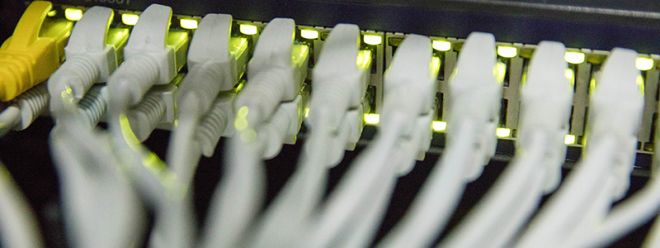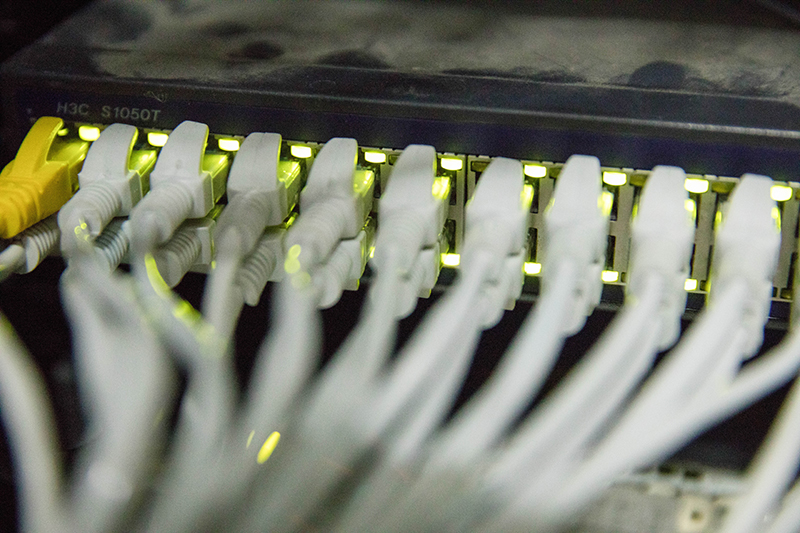The future development path of home broadband infrastructure

The future development path of home broadband infrastructure

Part 01, background
China Mobile Group has further upgraded its cloud-network integration strategy, built a ubiquitous integrated computing network, and created a "one-point access, instant use" computing service, allowing computing power to flow into thousands of households like water, electricity, heating, and gas. It has become the fifth necessary means of production for people's daily life.
The "China Mobile Computing Power Network White Paper" puts forward the goal and vision of "the network reaches everywhere, computing power is everywhere, and intelligence is everywhere". In order to realize this vision, the integration of computing and network of network infrastructure is the foundation, the integration of cloud and network is inevitable, and we will gradually move towards the integration of computing and network.
Based on China Mobile's smart home operation center's independent control of billion-level household pan-terminals, Hejia Cloud Network's accelerated network construction, network infrastructure research and development and other aspects of accumulation, from the bottom up, it focuses on three aspects: network element architecture, computer room deployment, and computing network integration. Dimension, try to explore the evolution strategy and direction of broadband infrastructure in the context of computing power networks.
Part 02. Evolution of transfer control separation architecture
Broadband network element infrastructure includes two categories: user-side equipment (broadband gateway) and operator-side equipment (OLT, BRAS equipment). Among them, broadband gateways, OLTs, aggregation switches, together with optical splitters, optical fiber cables, and network cables together constitute the commonly referred to access network; BRAS and other equivalent network element equipment (routers, switches, etc.) together constitute the commonly referred to urban domain network. It is worth mentioning that the network elements such as aggregation switches and routers involved are only used for general routing and switching functions. They are not unique network elements of broadband networks and will not be described separately.
The advantages of network element transfer control separation architecture are mainly reflected in the following aspects:
- Give full play to the ultimate performance of the forwarding plane: Line-speed forwarding on the forwarding plane continuously sinks to a lower position to maximize the proximity to users, enabling traffic to be offloaded nearby and jumping to the cloud at high speed, which is the physical guarantee for ultra-low latency and ultra-high bandwidth business experience ;
- Maximize the advantages of centralized control and flexibility of the control plane: The control plane is controlled by complex logic and continuously upgraded to higher positions to achieve centralized management and control of the forwarding plane and value-added services, improving network flexibility and reliability;
- Realize the integration and unification of heterogeneous networks: After different network elements implement the separation of forwarding and control, the functions of the forwarding plane and the control plane converge, further horizontal breakdown is achieved, the unification of different network elements is realized, the heterogeneous network is normalized, and the network is greatly simplified. architecture;
- Achieve decoupling of network element functions and get rid of equipment vendor lock-in: After the separation of transfer control and north-south interface standardization, multi-vendor equipment-level interoperability can be achieved, eliminating equipment vendor lock-in.
On the surface, the evolution of network element transfer control separation seems to be contrary to the evolution of computing network integration, but in fact it is an organic unity. In particular, the third advantage mentioned above will form a wide-coverage standardized terminal computer room with the data center as the carrier. Based on the network, terminal-side collaboration, edge-side collaboration, and cloud-side collaboration will activate the computing power of terminals, edges, and clouds. The separation of control and transfer reshapes the edge data center, and the computing power network wins at the edge.
2.1 Broadband gateway
The broadband gateway has been upgraded through transfer and control separation to achieve downsizing of the physical gateway on the user side, and all services are moved to the cloud, realizing "one-hop to the cloud" for broadband access.
The BBF World Broadband Forum standardization organization and the IETF International Internet Engineering Task Force have proposed user-side broadband gateway standards and deployment plans based on the transfer control separation architecture. Different standards organizations, the same system architecture and deployment plan, the industry has reached a consensus on the user-side broadband gateway transfer control separation architecture.
BRG (thin gateway) logically connects directly to vG (cloud gateway) through OverLay tunnel or 1:1 VLAN mapping. The two work together to carry the user-side gateway function. Separating cloud gateways through control transfer brings the following changes:
1. When providing L3~L7 value-added services, it reduces the complexity of gateway implementation, has a flexible upgrade and update mechanism, and empowers cloud gateways through SFC business chain orchestration;
2. Significantly shorten the business delivery cycle and rapidly deploy through cloud;
3. Integrate edge cloud, CDN and other integrated deployments, jump into the cloud, and greatly improve the user experience;
4. Reduce the cost of user-side physical gateway to a certain extent.
The physical gateway on the user side is based on an all-optical base and uses an OverLay tunnel to divert traffic to the edge cloud gateway at high speed. The cloud gateway performs business orchestration and scheduling based on the business chain, carries out home broadband value-added services, and conducts traffic by user, business, and content. Cloud and network access scheduling.
2.2 OLT network element
OLT, Optical Line Terminal, is a terminal equipment used to connect optical fiber trunk lines. Its function determines that the OLT itself is a network element device focused on the forwarding plane, and is not the key to separation of forwarding and control. The separation of forwarding and control is at most a reduction of its network element management functions to the cloud. When the broadband gateway and BRAS are separated for forwarding and control and deployed in edge cloud, the role of OLT in the separation of forwarding and control is not obvious. It may even be gradually co-located with the forwarding plane of other network elements, which will not be described in detail here.
2.3 BRAS network element
BRAS is located at the edge of the metropolitan area network and is the entrance for users to realize various broadband services. It plays a decisive role in the operator's network. At present, all major domestic operators have completed vBRAS upgrade and transformation, and have matured commercial use in existing networks. China Mobile has launched vBRAS equipment specifications earlier.
vBRAS has taken the cloudification of metropolitan area networks and completed the first step in edge cloud deployment. In the future, more network elements will be carried on the cloud resource pool, more services will be centralized configured and scheduled, and the network architecture will be simpler. , open and agile.
In traditional broadband networks, OLT carries the user access aggregation function. When BRAS realizes the separation of transfer and control, BRAS-UP will gradually move to a lower position and even be deployed at the OLT position until it replaces OLT equipment, greatly simplifying the network topology. .
Part 03. DC-centered layered architecture evolution
When multiple network elements and multiple heterogeneous networks are separated for forwarding and control, the network element equipment forwarding plane and control plane converge, which provides conditions for building a hierarchical network architecture centered on the DC. At the same time, some heterogeneous network networks Yuan may disappear.
We take the BBF TR-459.2 vBRAS standard specification as an example. As a broadband infrastructure, vBRAS also completes the related network element functions of the 4G LTE mobile communication network. On the other hand, the evolution of 4G and 5G network elements in mobile communication networks, including SGW, PGW, UPF, etc., has reversely penetrated the broadband access function. Eventually, fixed and mobile heterogeneous networks are completely integrated and unified.
China Mobile has also proposed a DC-centered cloud network architecture. The telecom cloud resource pool is centered on DC and unified hardware resource pools, including two layers of TIC (core TIC and edge TIC).
With the comprehensive transfer and control separation of network element equipment and the further integration of cloud and network, the following DC-centered operator's end office computer room layout will eventually be formed.
Domestic operators and foreign operators such as AT&T launched the R-CORD project in 2014. By using white box equipment, open source software, virtualization technology (SDN/NFV, etc.), the traditional end offices in the operator's broadband network The equipment room (switching center) was transformed into a data center similar to that of a cloud service provider, and the network architecture was reconstructed into a hierarchical network architecture centered on the DC, which was successfully put into commercial use.
Part 04. Computing and network integration evolution
When the network is reconstructed into a hierarchical network architecture centered on DC, if cloud network integration is inevitable, then computing network integration is the cornerstone. Each network element exists in the form of a DC edge cloud, and each hierarchical DC is connected into a network with an all-optical base. The computing power will flow freely between the DCs like tap water, realizing "computing follows people, and people move around" and "one point". Just plug it in and use it right out of the box.”
Part 05. Outlook
The computing power network has been promoted to an extremely important position at the industry and national levels, including the national "Eastern Digital and Western Computing" strategy and the operator's computing power network transformation strategy, which has huge market potential and strategic value. This article starts from the evolution of broadband infrastructure and discusses the development direction and strategies of computing power-oriented networks from all aspects. In the future, the goals of "ubiquitous computing power, computing network symbiosis, intelligent orchestration, and integrated services" will be achieved.